Book Summary and Analysis |
History, Philosophy, Politics and Society | Popular Psychology, Personal Growth and Self-Help
A Guide to
Robert Greene’s
The 48 Laws of Power
Summary and Analysis,
Key Ideas and Facts
by I.K. Mullins
Copyright©2015 I.K. Mullins. All Rights Reserved. No part of this book may be reproduced or retransmitted in any form or by any means without the written permission of the author.
Should you have any questions, please contact us at permissions@insightfulreader.com
PART I. A SUMMARY OF THE KEY IDEAS AND FACTS IN ROBERT GREENE’S THE 48 LAWS OF POWER
Law 41: Avoid Stepping into a Great Man’s Shoes
According to Greene’s Forty-First Law of Power, do not stay in the shadow of great men. Pioneers are always thought to be greater than those people who follow them. Instead of following them, select a new course and make your own name and identity.
***
Analysis and Comments on the Forty-First Law of Power
According to Greene, the Forty-First Law of Power can be applied in practice by using the following ideas:
- The past prevents the young person from creating his own world. One of the ways to escape the shadow of the past is to demean it. Be careful, though. The past often has something that is worth keeping.
- Seek the vacant areas in human culture and occupy them.
- Watch out for your adversaries who are younger than you are. In the future, they will try to rebel against you.
* * *
The following idea goes beyond Greene’s book and provides additional insight into the Forty-First Law of Power:
As William Shakespeare said in The Tempest, “What’s past is prologue.” Our past prepares our future. Before finding your own way, you have to learn the best from the great people of the past.
***
Law 42: Strike the Shepherd and the Sheep Will Scatter
According to Greene’s Forty-Second Law of Power, a group of people can often include an individual who sparks hostility toward you in other people. Do not wait until this person creates really big problems for you, and do not negotiate with the troublemaker. In order to neutralize his influence, you have to isolate or exile him. Strike the troublemaker and his followers will scatter.
***
Analysis and Comments on the Forty-Second Law of Power
According to Greene, the Forty-Second Law of Power can be applied in practice by using the following ideas:
- You can recognize a troublemaker by his arrogance or by his grouchy nature. Do not try to change him or pacify him. Do not try to attack him because he will work secretively to finish you. Instead, you have to separate him from the group and banish him as soon as possible.
- The troublemaker usually hides in the group, concealing his actions amongst the reactions of other members of the group. In order to isolate the troublemaker, render his actions visible to other people. As a result, he will lose his power to upset.
- There are a few ways to isolate the troublemaker: (1) physical isolation (banishment from the group); (2) political isolation (reducing the base of his support); (3) psychological isolation (isolating him from the group by subjecting him to insinuation and insult).
* * *
The following ideas, facts and comments go beyond Greene’s book and provide additional insight into the Forty-Second Law of Power:
- The herd mentality is very common. It refers to people’s desire to act in the same way that most other people do. The herd mentality promotes social adaptation and cohesion. At the same time, it discourages people from thinking and acting independently. Studies show that a minority of about 5 percent can influence a crowd. The other 95 percent will follow the minority without realizing that they are being led.
- Remember that when you strike the shepherd and the sheep scatter, you can influence their herd mentality. If you do not do so, then someone else will do.
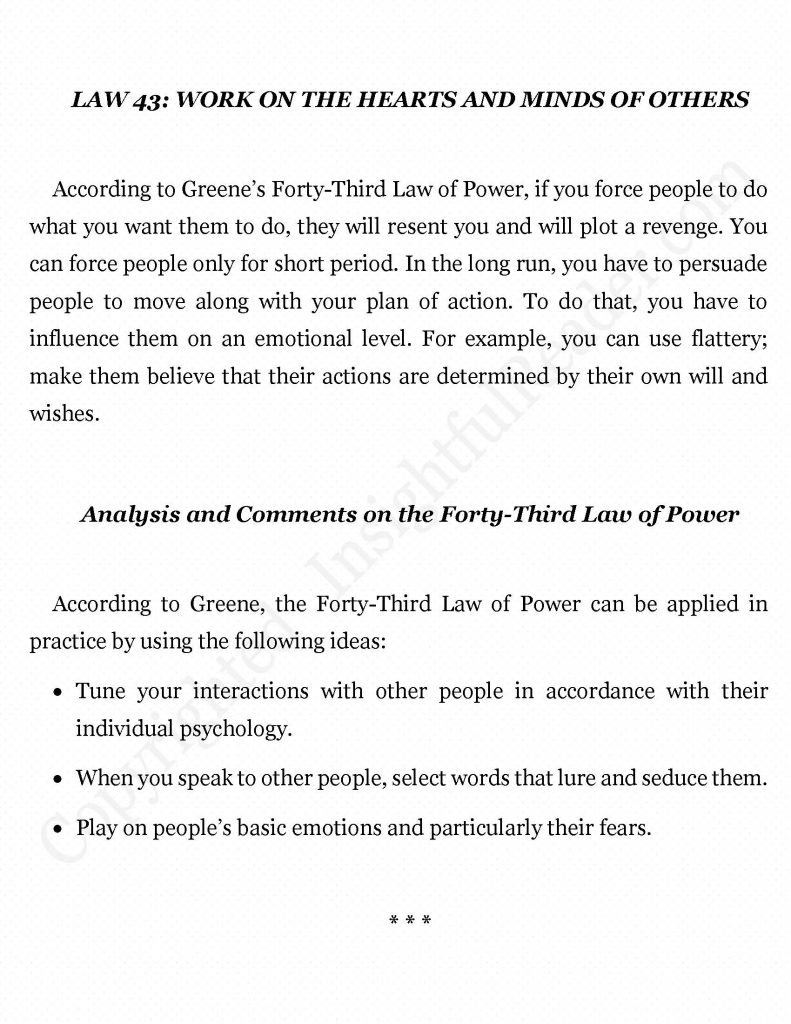

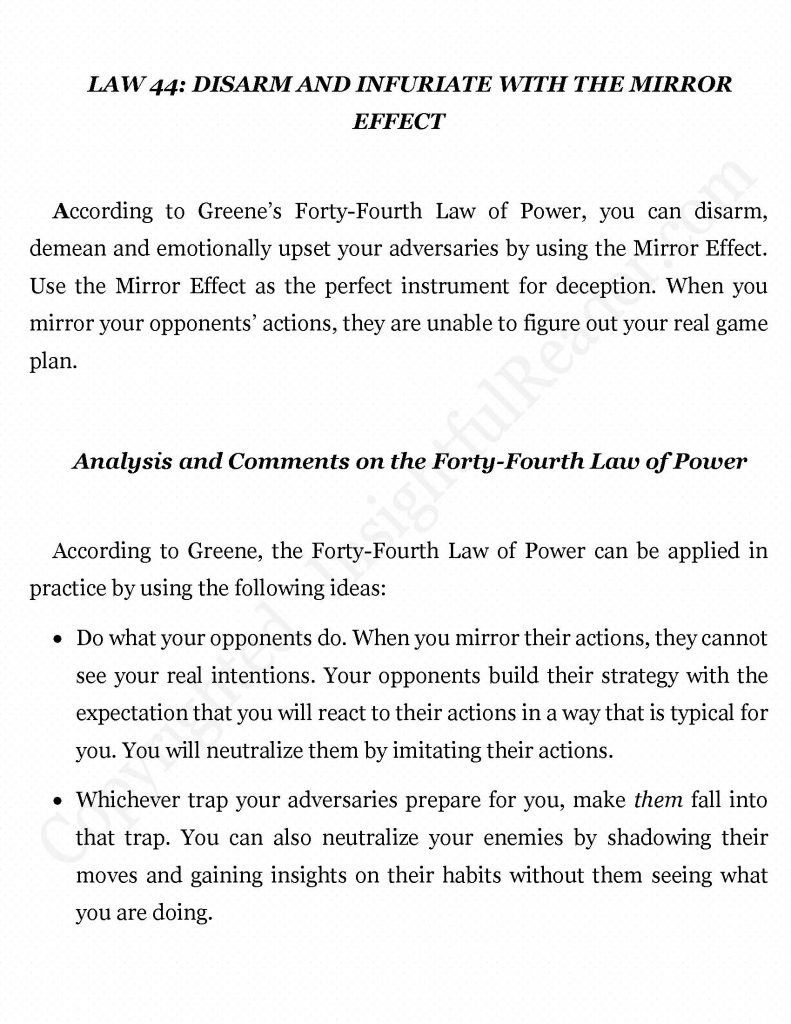
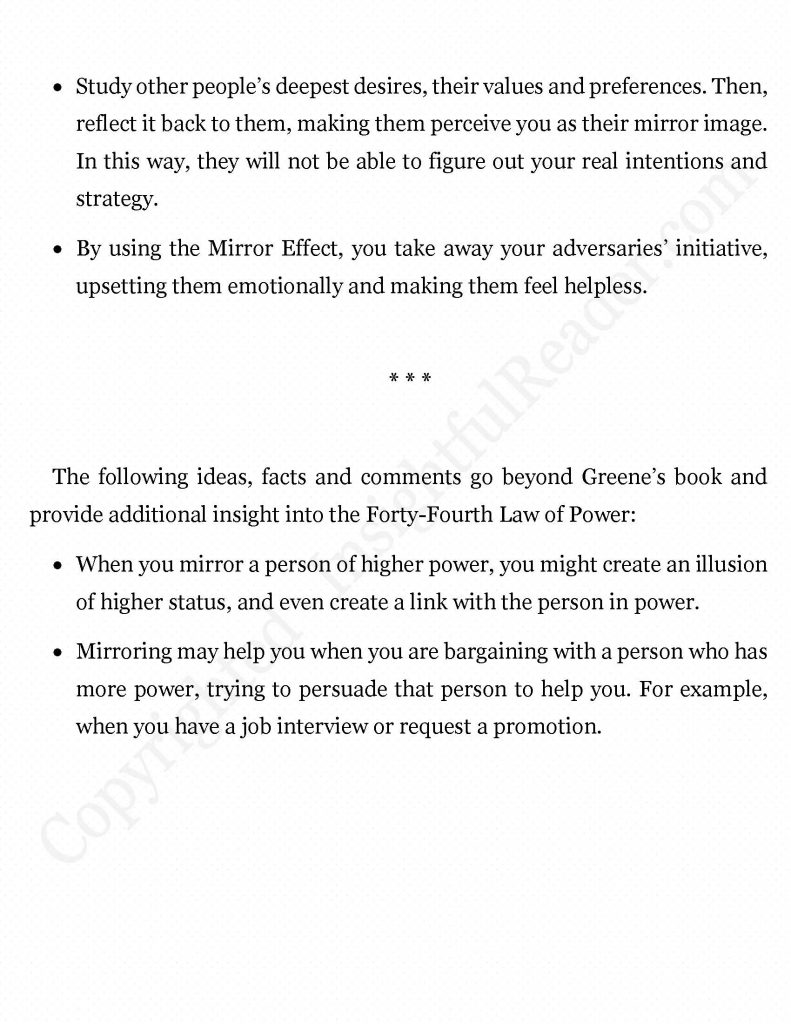
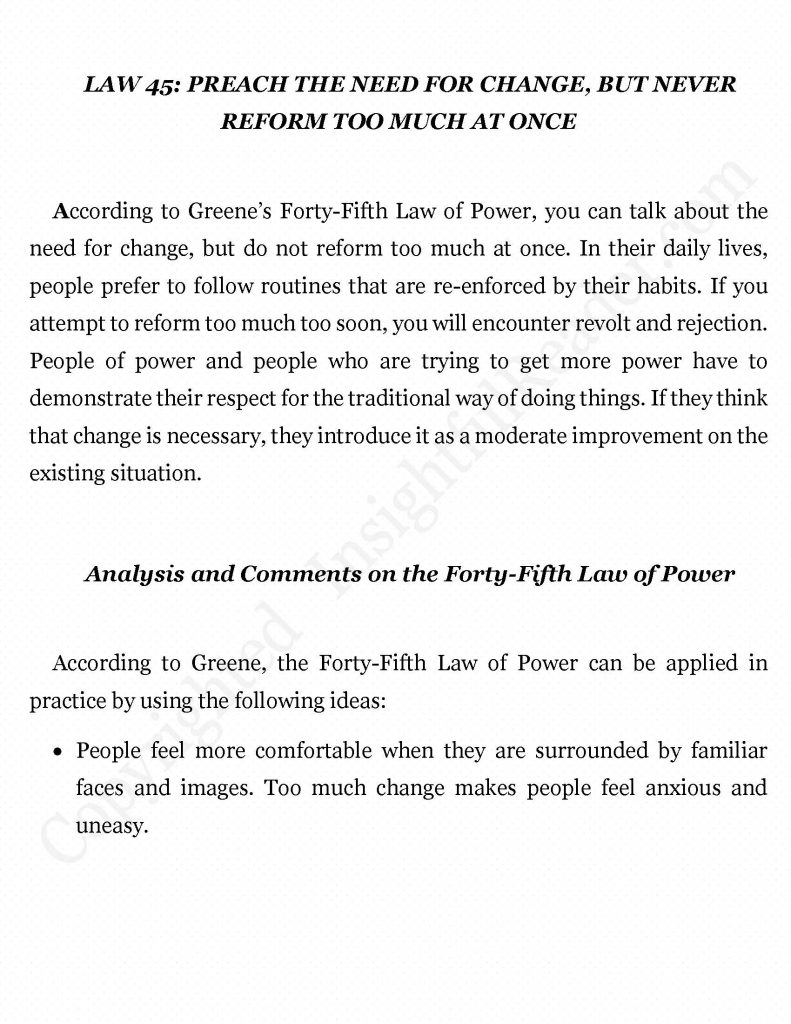


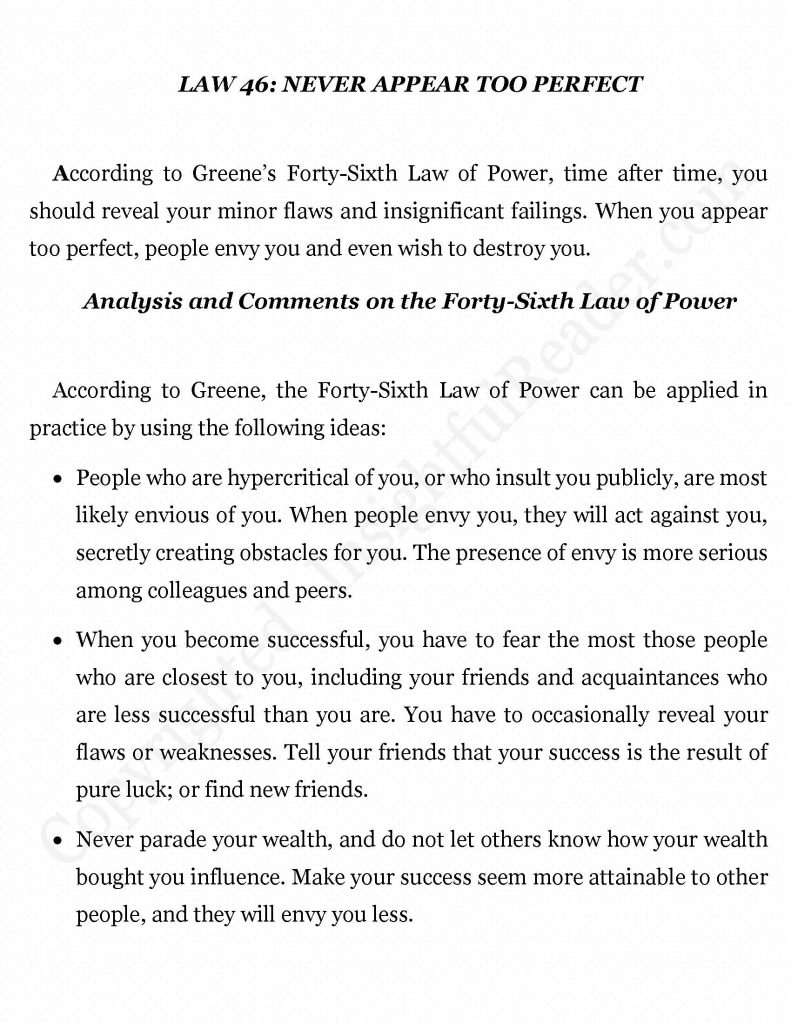

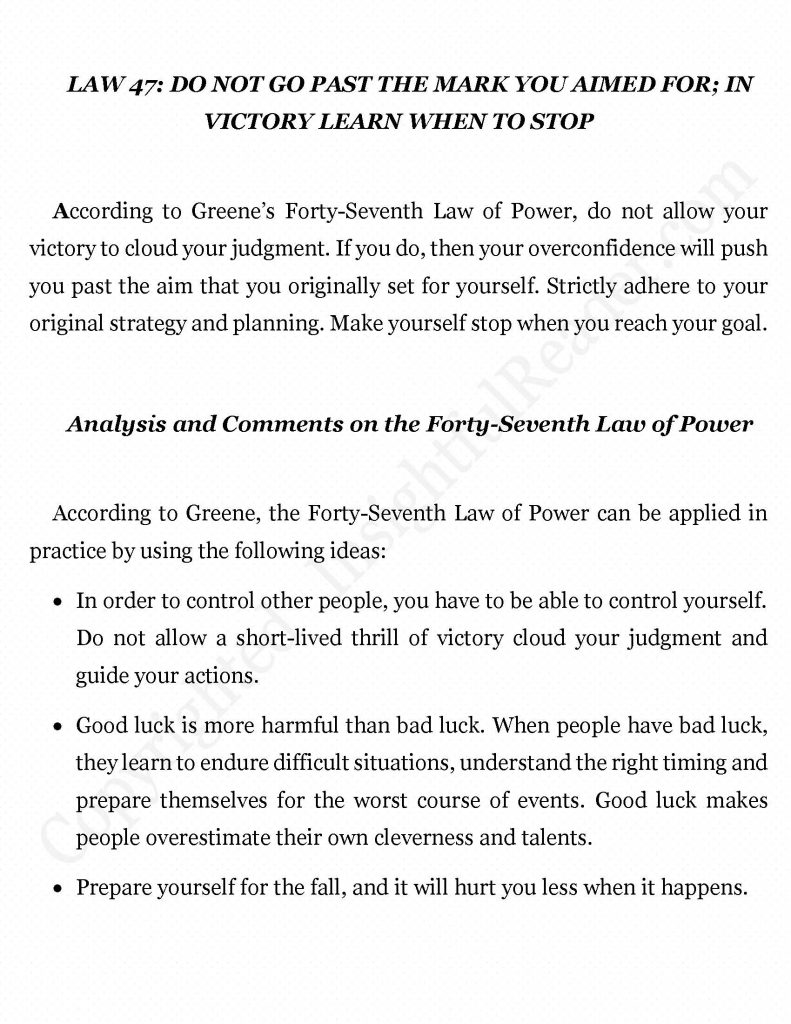



Go to Part II A Critical Analysis and References
Related content
Dead Wake by Eric Larson
Clinton Cash
Promoted links from around the web
Dead Wake by Eric Larson
Clinton Cash
